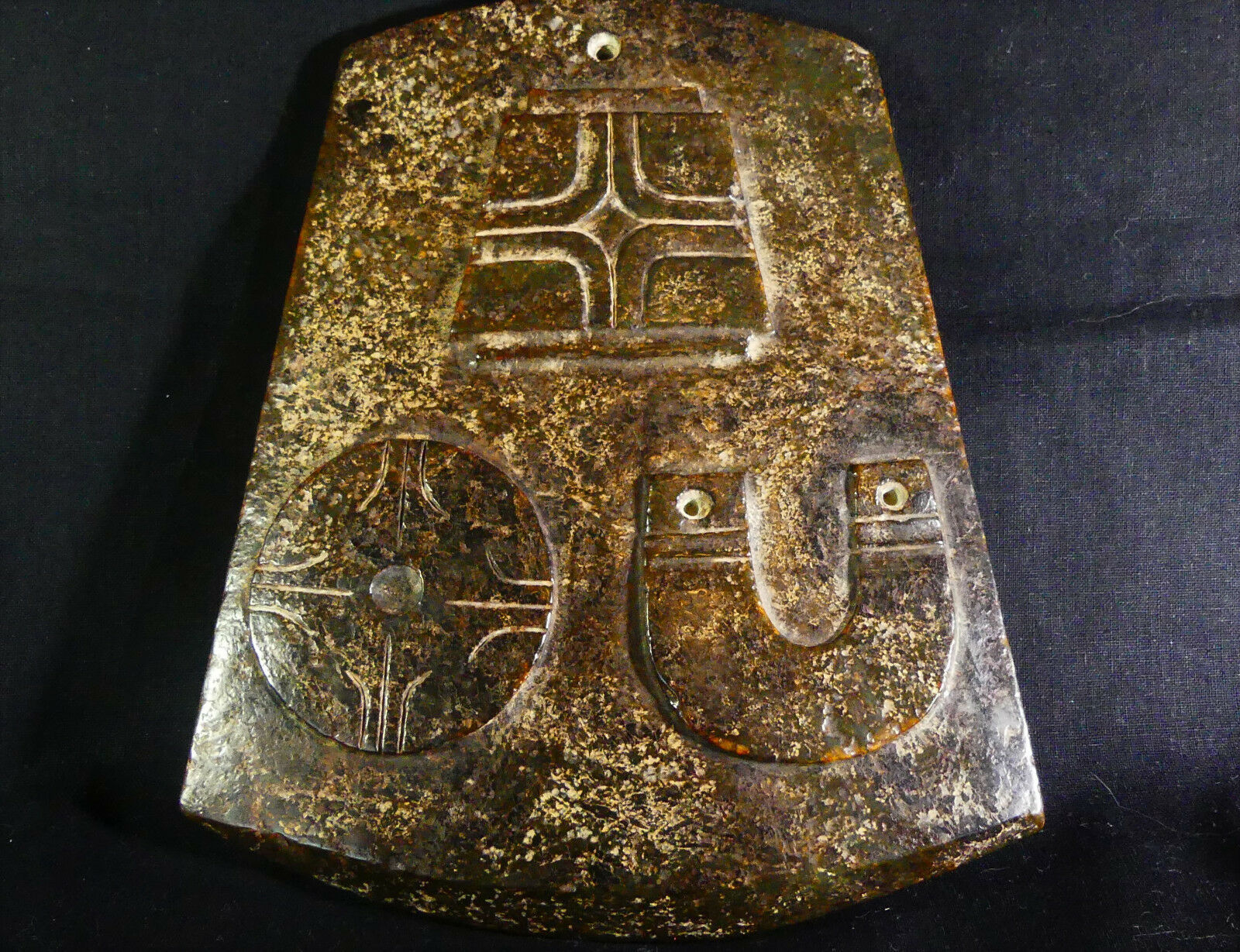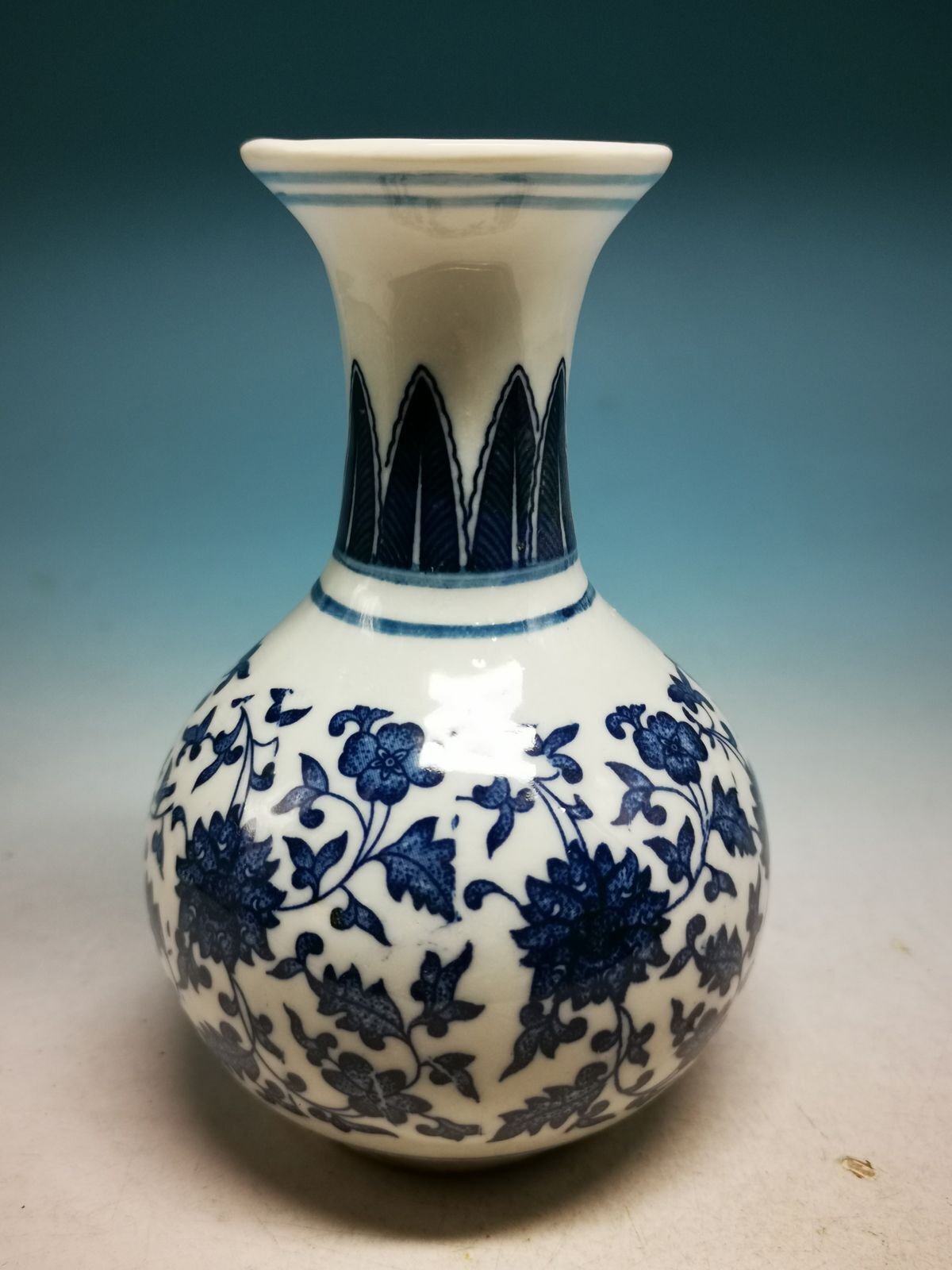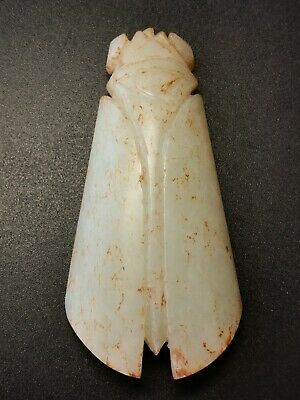-40%
Ancient Chinese 3 Emperor's Jade Axe "Jue" Immortality & Heaven w/Translation
$ 8395.19
- Description
- Size Guide
Description
ANCIENT CIVILIZATIONSArtifacts, Antiques & Fine Collect
i
bles
Ancient Neolithic Chinese Jade Axe
Three Emperor's Ceremonial
Axe (
Jue
)
Immortality Heaven (
Ti'en
) Tablet
XLG Ritual
c.
Hongshan Culture
4500 BC--2250 BC
Original & Authentic
with
English Translation of Chinese Characters!
“A ritual offering of wine is offered to the Council of Ancestors, who have all been called by Heavenly Decree to the Great Hall in Heaven (Ti’en).
Because of this Soul’s perfect work on Earth, may he easily be granted entrance into Heaven by the Council of Ancestors.”
est.
4
,000 Years Old!
A gentleman always carried a jade pendant, as a symbol of class and to remind him the virtues of a gentleman, since those virtues were found in jade
.
—Confucius
This RARE and very beautiful ancient, Neolithic Chinese Heaven/Axe (called a
Jue
in Chinese) is made of pure, Nephrite Jade that weighs about 2.13 lbs. (.966 kg.)
.
It has turned a wonderful shade of dark brown with highlights of burnt orange from the iron in the damp soil for over 4,000 years!
This ceremonial Nephrite Jade Axe weighs about 2.13 lbs. (966 gr.) and is about 7.25" (184 mm) tall x 6.0" (153 mm) wide x .76" (19 mm) thick.
It has a wonderful, original patina with no major chips, cracks, repairs, or restorations. Only surface scratches, calcification and differential weathering & pitting. Museum Quality patina!
There are 4, Extremely RARE ancient Chinese characters in low relief on one side of this jade tablet, that I have translated into English. {see photos 5-12}
While the other side has 3 large graphic symbols that represent the Three Huang Emperors of Heaven, Earth, and Man. {see photos 1-4}
This ancient jade tablet is shaped like an axe, with a single small hole in the top-center that would have served as a suspension hole.
The shape of the ritual axe is thought to scare away Evil Spirits, who were thought to lurk everywhere and who could prevent the soul of man from reaching immortality in Heaven.
The three, horizontal lines on the top represents the Chinese character (
San
): which means "Heaven, Earth, and Mankind."
{See photo # 12}
On both sides of the amulet are several ancient Chinese pictographs (characters) carved into the stone in low relief that I have translated below into English.
These characters are carved in the earliest Chinese script called “
Ku’wen
” or Large Seal Script.
{see translation below}
In ancient China, this jade axe was thought to be able to carry safely the spirit of the deceased to Heaven (
Ti’en
” in Chinese) and immortality.
Jade was thought to represent Heaven and was considered more precious than gold in ancient China.
Chinese experts estimate that it was made during the late Hongshan Culture (4500 BC--2250 BC) of ancient China about 4,000 years-ago!
I Guarantee it to be authentic and original!
Details:
This stunning jade amulet is made of solid Nephrite jade.
Although heavily pitted, it has a wonderful ancient patina from the iron that has been absorbed into the once green jade after being buried in damp soil for over 4,000 years.
This iron in the soil has turned this jade amulet a wonderful color saddle-brown with burnt-orange accents!
WOW!!
It is a very early example and is one of the few examples that has several ancient Chinese characters (pictographs) in low relief carved into both sides of the ritual axe/tablet.
This amulet has a small, suspension hole at the very top of the amulet that is classified as "double-bevel hole" by anthropologists.
It would have been used to suspend the amulet around the neck of its owner.
The top suspension hole is called a "double-bevel hole" that was drilled by hand, from each side with a slow-speed drill.
The hole is period correct and shows the growth of tiny micro-crystals of jade inside the bore holes and on the surface of the axe.
This chemical reaction can only happen after a piece of carved jade has been buried for thousands of years in damp soil.
These tiny crystals almost look like white powder and should never be cleaned off or removed as they attest to the authenticity of the piece.
{REF: "
JADE
" by Roger Keverne, pg. 57. This is an excellent reference book that can be found on eBay.}
In ancient China, this ritual axe would have been placed in the tomb or temple of the departed by his family to protect him or her from evil spirits on his journey to the afterlife and to allow him/her to enter Heaven.
It would also show the ancestors and spirits that he was a wealthy and honorable person whose “perfect work” would allow him immortality in Heaven.
TRANSLATION
This lovely amulet contains several ancient, Chinese pictographic characters that have been carved in low relief and incorporated into the design of this amulet.
I have been able to read and translate the larger characters, but their are dozens of smaller ones have been obscured by the extensive pitting and weathering this jade amulet suffered when it was buried in the damp earth over 4,000-years-ago.
This ancient, jade, Chinese tablet is in the shape of a ritual axe.
It would have been placed in a temple built above a royal tomb to symbolize a person’s social stratum, military rank, status, and identity.
The three symbols on the front of the ritual jade axe (
jue
) are believed to honor the Three Huang emperors of Heaven, Earth, and Man.
The ancient Chinese considered jade the most precious of all materials, prizing it more than gold, silver or bronze. Sophisticated jade and lapidary production techniques had already been mastered by the Neolithic era, and the love of jade, which some anthropologists consider a defining characteristic of Chinese culture, has endured until the present day.
Earliest jades came in the form of ritual implements (such as
bi
discs and
cong
tubes), articles of personal adornment, small carvings, and various types of blades. The latter were used as weapons in Neolithic times because jade is a very hard stone, but likely served more as badges of office and emblems of rank.
Zhou Rites, a book that records the sacrificial activities of the Shang and Zhou dynasties, says, "
Jade is used to make six ritual objects (bi, cong, gui, zhang, huang, and hu) to be offered to Heaven, Earth, and the four directions—North, South, East & West
.”
The offering of sacrifice to heaven, to the gods, and to ancestors were all important rituals for emperors.
But the “Sacrifice to Heaven” is believed to have been the most important one.
This ceremony was performed by the emperor on the winter solstice every year.
The characters used on this jade axe suggest that this offering was perhaps used in the Sacrifice to Heaven ceremony.
The deaths of ruling kings and emperors were grand is scale with hundreds or even thousands of precious jade and latter bronze artwork entombed in their imperial resting places.
Above the tombs, mausoleums became the sites for sacrifices to be offered to them and to the ancestors and gods during each of the four seasons.
English Translation:
The front side of this ceremonial jade axe contains three graphic symbols that have been carved in low relief in the jade.
Starting with the figure on the top, here is my translation of the meanings of these three symbols:
This symbol on the top that looks like a cross {see photo # 2} is the ancient Chinese graphic for the temple of the deceased ancestor.
Temples or memorials were built on the surface, directly above the tombs of deceased members of the Chinese aristocracy.
All the descendants, sons and grandsons, would stand in front of this entrance and present their offerings to their departed ancestors.
These offerings would often be presented on the monthly and then yearly passing of the ancestor.
The circular symbol on the bottom left {see photo # 3} is a
Bi
that symbolizes the cosmos with the portal to Heaven (Ti’en) in the center.
The
bi
disc is one of the six ritual jades:
bi
(representing the heavens),
cong
(tubes, representing the earth),
gui
(ceremonial flat blades and axes, representing the east),
zhang
(ceremonial flat blades and axes, representing the south),
hu
(a vessel, representing the west), and
huang
(a flat arc of jade, representing the north). Of these ritual jades, the
bi
is perhaps the most important and one of the most enduring forms found in Chinese art.
And the final symbol on the right (see photo # 4} is a
Huang
with two suspension holes in it.
Huang
means “resplendent, beautiful, and grand.”
In ancient China, the concept of the “Three Huang and Five Di” was well established.
The Three Huang were the emperors of Heaven, Earth, and Man.
While the Five Di were mythical emperors known as: Huangdi, Zhuanxu, Diku, Yao, and Shun.
Di
originally signified “God in Heaven” or the “Highest Power” and he was the dominant god ruling over the cosmos.
**********************************************************************************************************
There are four, compound, ideographs (graphic characters) abraded in low relief on the other side (reverse side) of this jade axe.
The pictographic characters are the first written characters ever used by the Neolithic Chinese.
I offer my best translation of these four graphic characters:
“A ritual offering of wine is offered to the meeting of the Ancestors, who have all been called by Heavenly Decree to the Great Hall in Heaven (Ti’en).
Because of this Soul’s perfect work on Earth, may he easily be granted entrance into Heaven by the Council of Ancestors.”
The three horizontal lines at the top of the axe symbolize the number of Heaven, Earth, and Humanity (in Chinese
San
).
The Emperor is the one who connects these three elements of the cosmos together.
Top Right
[See photo # 6]
:
A ritual offering of man’s perfect wine of offered as a ritual sacrifice.
It is poured and falls on a bundle of grass, which was then burned after the ceremony was over.
Lower Right {photo # 7}:
In philosophical terms, a reunion or meeting (
Ch’ien
) of several ancestors in a great hall.
An Honorable (Sweet) Heavenly Decrees (
Ling
) that has called several men to life and determines their fate. Edicts issued by an emperor were entitled “Sacred Instructions” or “jade words from the golden mouth.”
No one was allowed to say the emperor’s name—it was even forbidden to write it.
[Ref. Weiger pgs. 47, 79, 185, 191, 76—the edicts of Emperors who are supposed to “speak in soft or sweet words.”
{See Imperial Tombs, pg. 21]
Top Left {see photo 8}:
The Spirit of the deceased man’s (
Fu
) pledge to do perfect work. [Ref. pg. 112]
Lower Left {see photo # 9}:
A rare compound graphic that depicts the birth of a new-born child, head forward, thus in the most favorable position, as he/she is born from the mother's womb.
Hence, its extended meaning is that one something that happens fluently, naturally, or easy, as that motion of falling water (
Liu
).
The natural birth of the child entering one world from another was thought to be like a person’s soul departing Earth for Heaven (
Ti’en
).
[Ref: pg. 235]
In addition to the four large characters, there are dozens of much smaller characters (some as small as 2 mm) that were carved into both the front and back of this amazing yue-axe!
There are characters for: ancestor, son, speaking, ritual offering, etc.
The differential weathering and pitting make it difficult to read and thus translate all the tiny characters, but if you look carefully you can see them without magnification.
Therefore, my literal translation of this precious, jade amulet is as follows:
“A ritual offering of wine is offered to the Council of Ancestors, who have all been called by Heavenly Decree to the Great Hall in Heaven (Ti’en).
Because of this Soul’s perfect work on Earth, may he easily be granted entrance into Heaven by the council of Ancestors.”
Jade was highly prized by these early civilizations in China and it was thought to have positive energy to drive away evil spirits and bring good luck and fortune to all who wore a piece on their person--in life and in death. Jade was also believed to be a portal or messenger that could carry prayers to Heaven and send messages to those on Earth from departed ancestors and Gods in Heaven.
This ancient amulet is a fine work of art and it is truly a museum quality study piece of great historical significance.
Because of its cultural significance, it is highly recommended that this item be for display only.
Condition
As noted above, although this jade pendant is heavily pitted and shows signs of differential weathering, it has a wonderful ancient patina.
It has not been repaired or restored and is in “as found” condition.
The jade pendant has one hole that would have been used for suspension around the neck. The hole was been drilled by ancient hand tools at low RPM from both sides of the amulet--see 4x macro photos. These are period correct and have a wonderful layer of calcium and micro-crystalline jade inside the bore holes--just perfect.
I have examined this piece under 10x and 80x magnification and it shows no signs of modern tool marks--only hand tools were used to make this amulet.
It has been cut, carved, shaped, and drilled with ancient hand tools.
I also examined it under Black Light and found no signs of repairs or modern carving.
Modern drills would have drilled the hole straight and true--and not larger on the outer edge of the hole.
Thus, this ancient, drilled hole is another sign that this amulet is original and authentic.
Price & Value
I have carefully examined this ancient jade statue and I
GUARANTEE
it to be 100% original and authentic or your money back! The hand tool marks left in the jade by the master stone artist who carved, shaped, and engraved this work of art appear to be consistent with those marks of other ancient jades I have examined.
Each object I sell is professionally researched, translated (if I can...(smile), and compared with similar objects in the collections of the finest museums in the world. I have been dealing in fine antiquities for over 45 years and although certainly not an expert in every field, I have been honored to appraise, buy, collect, and enjoy and recently sell some of the finest ancient art in the world. When in doubt, I have worked with dozens of subject matter experts to determine the condition and authenticity of numerous antiquities and antiques. This careful examination helps to insure you are buying quality items and helps to protect your investment. There are many modern reproductions or "fakes" on the market today, so be sure and buy only from experts in the field.
This RARE Jade Axe has an auction appraisal of 5,000 to 0,000 USD!!
Note: For reference on how to purchase authentic archaic jade, may I refer you to an excellent book published in 2009 by Stephen Payne called "
How to Purchase Archaic Jade.
" He shows in great detail how the experts determine the age and date of ancient Chinese Jade. This book is well worth the price if you are just starting your collection or if you are a seasoned "expert" and can be purchased on eBay.
Please examine the photos taken at 4x macro carefully as they are part of the description.
The stand and ruler are not part of the auction, just included to give you a better perspective.
And please ask any questions before you buy.
I
GUARANTEE
this statue is ancient and authentic or your money back!
REFERENCES
Museum of Chinese History, Beijing
The Ancestral Landscape
, David N. Knightley, 2000
The Great Bronze Age of China
, edited by Wen Fong, MET, 1980
Changhua Annals of the Republic of China
(1911–1949)
British Museum,
Jessica Rawson
Smithsonian Museum, Sackler & Freer Gallery, WDC
MET, New York
Zhan Academy.org
"
JADE
" by Roger Keverne
Please examine the photos taken at 4x macro carefully as they are part of the description.
The stand and ruler are not part of the auction, just included to give you a better perspective.
And please ask any questions before you buy.
Per e-Bay's rules, PayPal only please!
THANKS!
FREE SHIPPING in USA includes INSURANCE for all 50 United States.



















